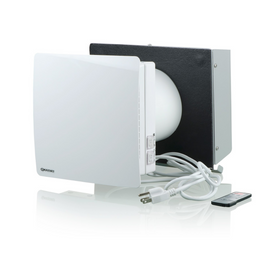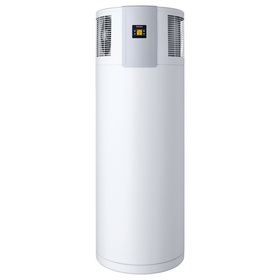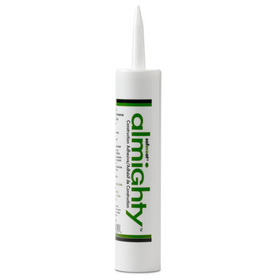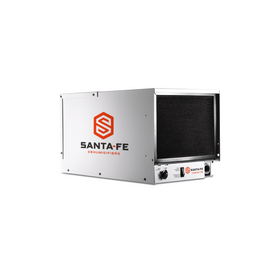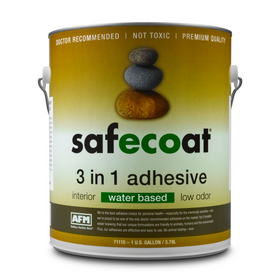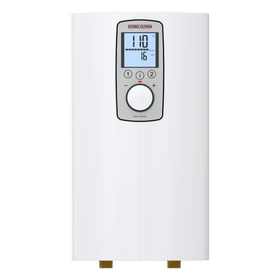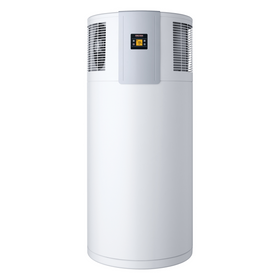
The Rochester PassivHaus Comforts All of the Senses While Monitoring Energy and Air Quality
Last Updated: Feb 13, 2025While Matthew Bowers was in the US Navy for six years, working as a nuclear engineer, heat transfer systems and fluid mechanics were his jam. So, after leaving the Navy, he earned a degree in mechanical engineering to work on HVAC systems. While in school, he learned about homes that were so energy efficient they didn't need furnaces. "I thought, 'What am I designing HVAC systems for then?'" Bowers says. "That was my 'aha moment."
He began doing energy audits and high-performance consulting. "No one was embracing all of the Passive House strategies" that result in peak energy performance, he says. "The ventilation wasn't efficient enough, or the air-tightness wasn't sufficient, or they didn't want to purchase the Passive House European windows. There was always something that wasn't working right for the clients."
When Bowers and his family began to house hunt, they found a rural lot near Honeoye Falls, New York (near Rochester). The lot had perfect passive-solar orientation, "and all the stars aligned," he says. They decided to build. "We took advantage of my industry knowledge to fully design our own Passive House, with the understanding that we'd document the process and open it up for tours when it was finished."
Table of Contents
- Following PassivHaus Protocol
- How Was the Rochester PassivHaus Optimized for Efficiency?
- PassivHaus Energy Efficiency
- How Does the Rochester PassivHaus Monitor Energy Use?
- Lessons Learned
- How Did PassivHaus Certification Increase Comfort?

Following PassivHaus Protocol
Bowers trained with PassivHaus Institute in Germany—he is now founder and president of Rochester Passive House Consulting—before that group broke with PHIUS (Passive House Institute US). So, he adhered to the German protocol in building his home. "PHIUS was still accepting PHI modeling at that time," he says. The certification process, however, was a bit "unstable," he adds. "Because of my experience with the certifier, that pushed me further to become a certifier myself."
Bowers began the home-building process with a floor plan that he modeled in PHPP (Passive House Planning Package), an Excel spreadsheet developed by the PassivHaus Institute. "After each iteration, I updated the model to optimize things like wall thickness, window area, and overhangs," he says. After figuring out the home's final square footage and volume, Bowers "optimized the wall thickness to meet the PassivHaus standard.

How Was the Rochester PassivHaus Optimized for Efficiency?
The house was built using 16" double-wall construction with 2 x 2x4 walls spaced seven inches apart." The 16-inch double-wall assembly is insulated with dense-packed cellulose, achieving an R-55. The interior load-bearing 2x4 wall is a service cavity. The carefully sealed ZIP system on the exterior side of the interior wall is the air barrier layer. A 1.5-inch rain-screen gap and a weather-resistant barrier layer on the double-wall assembly's exterior side prevent moisture from entering the wall.

"We optimized our overhangs on the south side of the house, oriented the house a majority of the glass faces south, and incorporated substantial shading and smaller windows for the glass facing west, so we incorporated a lot of passive solar techniques," he says. The family chose Zola Windows for the home.

An ERV (energy recovery ventilation system) exchanges the air in the house once every three hours. Inside the house, the family used no- and low-VOC paints and finishes, hardwood cabinets, and resilient flooring "because of the four kids and a dog," Bowers says. The family has ENERGY STAR appliances and a heat-pump clothes dryer.
A CT on the ventilation system "quantifies the cost of fresh air," Bowers says. "Surprisingly, we spend more money on new filters than we do in electric to run the machine." Because he considers the heat-pump dryer and induction/convection stove "energy hogs," Bowers measures their use, as well.
"On top of these devices," he continues, "I am monitoring the indoor air quality in the house, which helps me to identify how cooking, parties, even vacuuming impact our air quality. It's also a good reminder to change the filters in the ERV when air quality starts to dip for longer periods."
Lessons Learned
Bowers says that during construction, installation of the ventilation system necessitated drilling many 3.5-inch holes in the joists between the first and second floors. "If would have known, I would have done an open-web truss instead," he says.
While the family enjoys the cooling provided by the two wall-mounted mini-splits, Bowers wishes he would have come up with a way to improve the cooling distribution upstairs. In the winter, we don't need to turn on the second-floor heat pump. But cooling the upstairs in the summer is a challenge as the mini-split is un-ducted."
He suggests that homeowners intending to build a Passive House should collaborate with their architect and Passive House consultant from the get-go. The Bowers family worked with Grater Architects, a firm with LEED-accredited professionals, "and because of partnership, it was pretty easy to coordinate changes and how those changes affected performance.
During the design process, "window sizes, overhangs, and window locations change constantly," he adds, "with serious consequences in the performance of a home. So, it's beneficial to have the designer or architect understand how changes can affect the energy model."
While Bowers finds the engineering in PassivHaus construction "fascinating." He's also glad the home's construction and operation result in minimal environmental impact.
But, the biggest selling point for us is comfort.
Camille LeFevre
Camille LeFevre is an architecture and design writer based in the Twin Cities.

